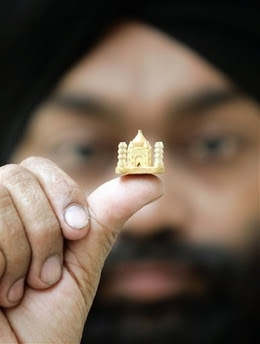
Gold is considered one of the most precious metals in the world; and it has been used as a symbol for purity, value and royalty.
But do you know much gold is there in the world? And who owns most gold? If not, read on. . .
What is gold?
Gold is a rare metallic element with a melting point of 1064 degrees centigrade and a boiling point of 2808 degrees centigrade. Its chemical symbol, Au, is short for the Latin word for gold, 'Aurum', which literally means 'Glowing Dawn.' It has several properties that have made it very useful to mankind over the years, notably its excellent conductive properties and its inability to react with water or oxygen.
Where does the word gold come from?
The word gold appears to be derived from the Indo-European root 'yellow', reflecting one of the most obvious properties of gold. This is reflected in the similarities of the word gold in various languages: Gold (English), Gold(German), Guld (Danish), Gulden (Dutch), Goud (Afrikaans), Gull (Norwegian) and Kulta (Finnish).
How much gold is there in the world?
The World Gold Council estimates that at the end of 2001, it is estimated that all the gold ever mined amounted to about 145,000 tonnes.
Who owns most gold?
If we take national gold reserves, then the most gold is owned by the United States, followed by Germany and the International Monetary Fund.
But if we include jewellery ownership, then India is the largest repository of gold in terms of total gold within the national boundaries. In terms of personal ownership, it is not known who owns the most, but it is possibly a member of a ruling royal family in the East.
If all the gold that there is in the world is laid around the globe, how far would it stretch?
If we make all the gold ever produced into a thin wire of 5 microns (millionths of a metre) diameter -- the finest one can draw a gold wire, then all the gold would stretch around the circumference of the world an astounding 7.2 million times approximately!
Why is gold measured in carats?
This stems back to ancient times in the Mediterranean /Middle East, when a carat became used as a measure of the purity of gold alloys. The purity of gold is now measured also in terms if fineness, i.e parts per thousand. Thus 18 carats is 18/24th of 1000 parts = 750 fineness.
What is Carat?
A Carat (Karat in the US & Germany) was originally a unit of mass (weight) based on the Carob seed or bean used by ancient merchants in the Middle East. The Carob seed is from the Carob or locust bean tree. The carat is still used as such for the weight of gem stones (1 carat is about 200 mg). For gold, it has come to be used for measuring the purity of gold where pure gold is defined as 24 carats.
How does a gold mine work?
The gold-containing ore has to be dug from the surface or blasted from the rock face underground. This is then hauled to the surface and milled to release the gold. The gold is then separated from the rock (gangue) by techniques such as flotation, smelted to a gold-rich dor� and cast into bars.
These are then refined to gold bars by the Miller chlorination process to a purity of 99.5%. If higher purity is needed or platinum group metal contaminants are present, this gold is further refined by the Wohlwill electrlytic process to 99.9% purity.
What happens to gold after it is mined?
The ore is normally sent to a refinery, which will extract and melt down the gold into a pure 24ct form, normally as bars or ingots.
How big is a tonne of gold?
Gold is traditionally weighed in Troy Ounces (31.1035 gm). With the density of gold at 19.32 g/cm3, a troy ounce of gold would have a volume of 1.61 cm3. A metric tonne (equals 1,000 kg = 32,150.72 troy ounces) of gold would therefore have a volume of 51,762 cm3 (i.e. 1.61 x 32,150.72), which would be equivalent to a cube of side 37.27cm (Approx. 1' 3'').
What percentage of gold is used in jewellery, industry and investment?
Around 70% of gold demand is jewellery, 11% is industrial (dental, electronics) and 13% is investment (institutional and individual, bars & coins). Gold jewellery has strong 'investment' attributes in all countries, and in markets such as India and Middle East is sold by weight at the prevailing daily rate with a supplementary "making charge" which varies according to the complexity of the piece.










 In an entry on his blog entitled “Occupational hazard,” Kobayashi said: “My jaw refused to fight any more.”
In an entry on his blog entitled “Occupational hazard,” Kobayashi said: “My jaw refused to fight any more.” The world’s oldest running car is set to cross the auction block at Pebble Beach in August.
The world’s oldest running car is set to cross the auction block at Pebble Beach in August. Indian miniature artist Jaspal Singh Kalsi displays his creation of 1.5 cm high (0.59 inch) wooden replica of the Taj Mahal, in Amritsar, India, Monday, June 25, 2007. The Taj Mahal is among the leading contenders to be the new Seven Wonders of the World as a massive poll enters its final month with votes already cast by more than 50 million people, organizers say. The seven winners will be announced July 7, 2007 in Lisbon, Portugal. (AP Photo/ Aman Sharma)
Indian miniature artist Jaspal Singh Kalsi displays his creation of 1.5 cm high (0.59 inch) wooden replica of the Taj Mahal, in Amritsar, India, Monday, June 25, 2007. The Taj Mahal is among the leading contenders to be the new Seven Wonders of the World as a massive poll enters its final month with votes already cast by more than 50 million people, organizers say. The seven winners will be announced July 7, 2007 in Lisbon, Portugal. (AP Photo/ Aman Sharma)




